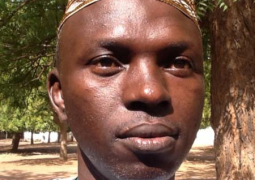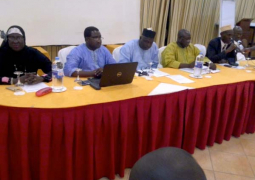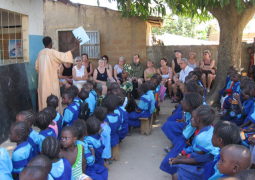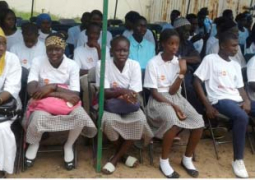He honed his brush strokes in the midst of the defunct Gambia Black African Art Association, a dynamic yet fleeting 1980s arts circle which brought together an array of highly talented, yet little noticed artists and art educators such as the late and highly lamented Comrade Sillah, the Sorbonne educated Momodou Ceesay, Njogu Touray and others. Etu was the youngest in the group, and his wisdom made him a keen receptacle of new and illuminating ideas from his more accomplished seniors. His early water colours, were mostly realist art, only occasionally expressionism and were never abstract. It was only in later years, when his art matured with his years, that he had a flair for portraiture and the non figurative.
Another reason for this artistic volute face, may have been his exposure during five years from 1996, to formal art training at the esteemed Kampen Art Academy in Holland. He once told me how he read the art history of the Dutch Masters (great painters) from the Renaissance, to the Baroque and Modern epochs, and how Rembrandt’s portraits made a lasting impact on his love for copying the human face. His training at Kampen made him one of the very few practicing Gambian painters with a modicum of formal training at art school
He used the school to share his artistic brilliance. He worked as an art teacher at Gunjur Secondary school and at St. Joseph Girls High School in Banjul. Much later, he taught art modules at the Gambia College and the UTG. He has excelled in over 20 major exhibitions locally and in Europe, America and China.
Yet, Etu’s greatest discovery came in 2003, when newly arrived from his studies, he established the Tunbung Art Gallery deep in the forests of Batokunku. His desire was to turn a patch of the dark and forbidden forest into a place where artistic brilliance will shine through art classes, workshops, and exhibitions. After nearly a decade of hard work, he opened the Tunbung in 2012, moved in to live there, and soon Tunbung became a sort of Mecca for art lovers, local and foreign. The place buzzed with activity and artistic panache. If there were no foreign students on short attachments, there would be workshops or exhibitions going on; many a time, all went on together seamlessly thanks to his good humour and patience.
Of late, he had developed interest in videography and I worked with him on a court metrage on Gambian World War Two veterans, which almost made it to the Clap Ivoire film festival in Ivory Coast last year. However, as he was too busy working on a major landscaping project at the Banjul airport, he could not complete editing the short film.
Etu was a true art professional. He loved art, lived art and disseminated art to many, here and beyond. I hope that Tunbung survives him and continues to be the major art rendezvous in the country. To his family and many students, I pay my condolence and pray for his soul to rest in peace.
(B. Etu Ndow, Gambian painter, sculptor, videographer and art educator born c.1968, died 23 March 2014).





